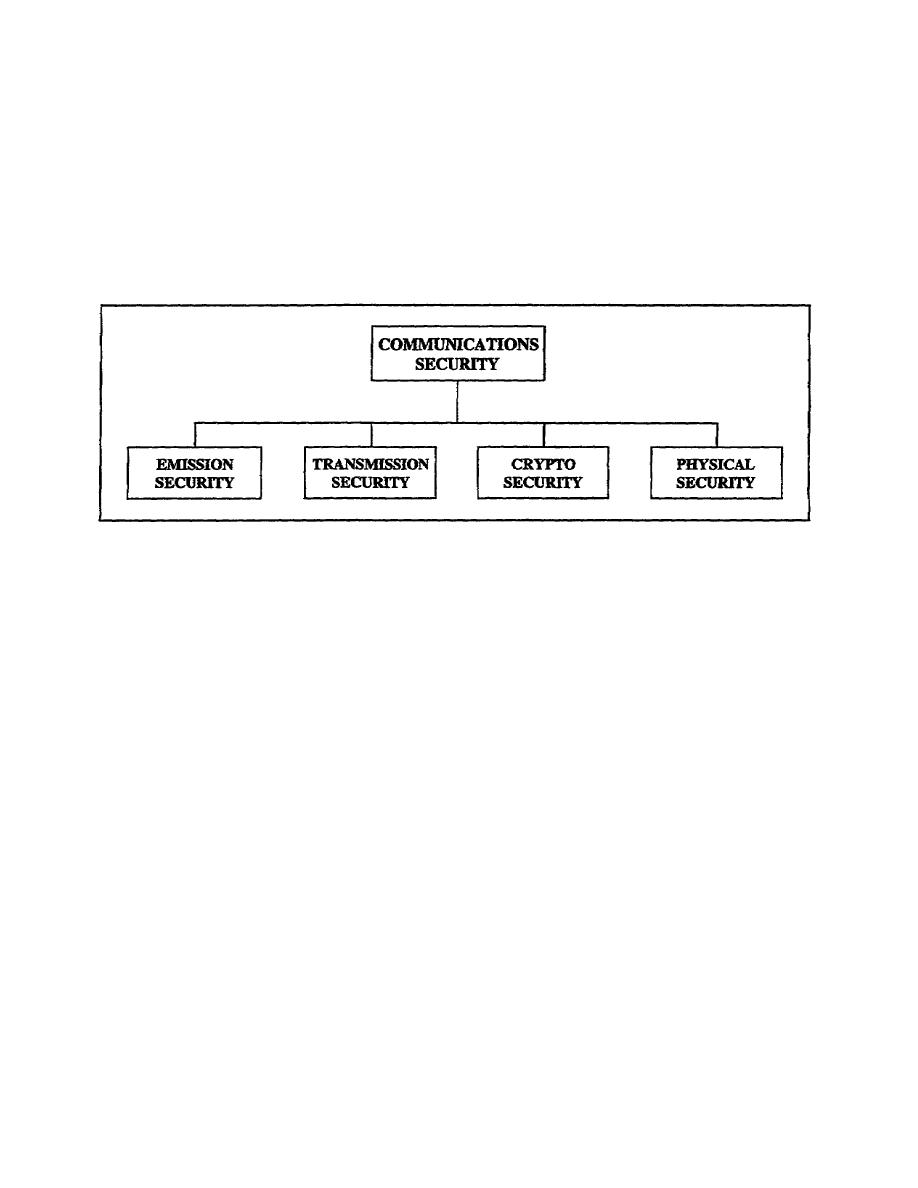
1.
General. All electrical devices produce some form of emissions. Certain devices can capture those
emissions, sort them, determine their general origin, and determine their meanings. These emissions have two
forms. Some involve communications (radio) and others do not (radar and so forth). The gathering and
interpreting of these missions are called communications intelligence and electronic intelligence. However,
complex systems and techniques to intercept and interpret these emissions are not needed if basic COMSEC
practices are ignored.
2.
Communications security. COMSEC is the protection resulting from measures designed to deny
unauthorized persons information of value gained from having access to and studying our communications. It
involves ensuring the authenticity of such communications. Figure 1-1 shows the COMSEC elements.
Figure 1-1. COMSEC elements.
a. Emission security helps deny information from unauthorized persons. An enemy will likely intercept
what is sent. One method is to observe total silence. This involves turning off all radiating systems. Another is
selective silence where only certain systems operate during specific periods. An enemy unit that does not know
about a friendly unit cannot get targeting or other data. Denial is easier when operators:
(1) Mask antenna locations.
(2) Use directional antennas.
(3) Keep transmissions as short as possible.
(4) Use the minimum power needed to pass information.
b. Transmission security (TRANSEC) protects transmissions from being intercepted and exploited,
except by cryptoanalysis.
(1) The key to TRANSEC is organized, succinct, and well thought out messages to keep transmission
time to a minimum. Give only what is needed to those who need it
SS0137
1-2



 Previous Page
Previous Page
